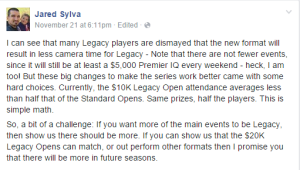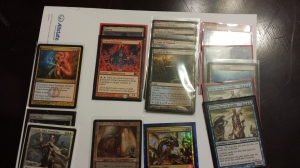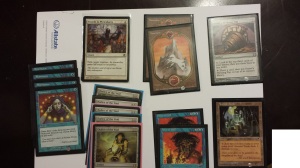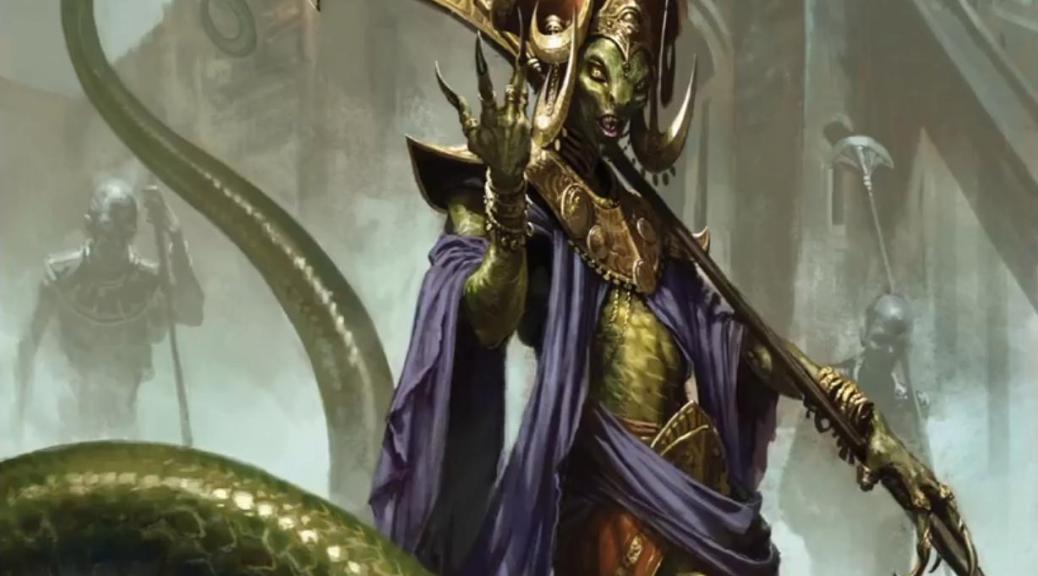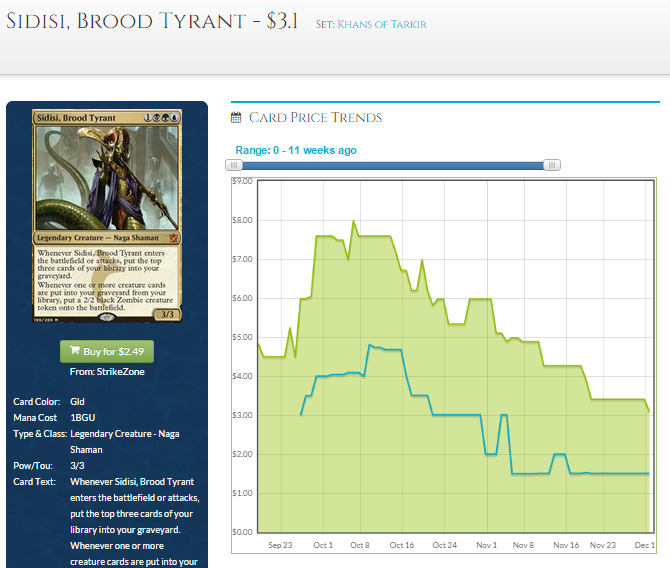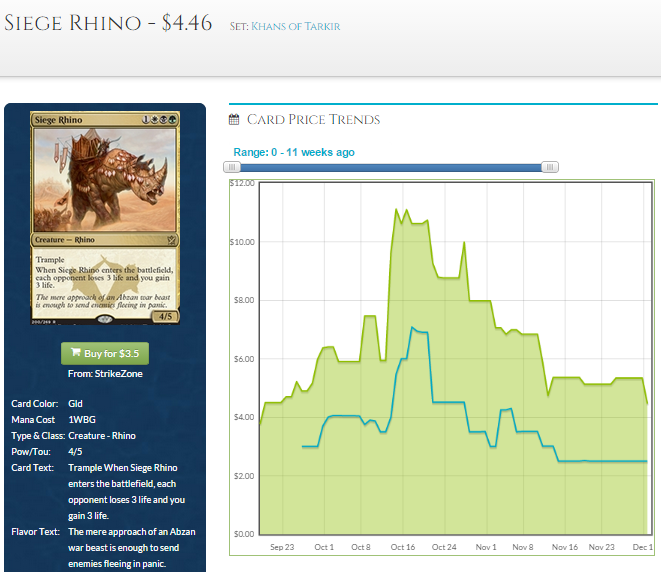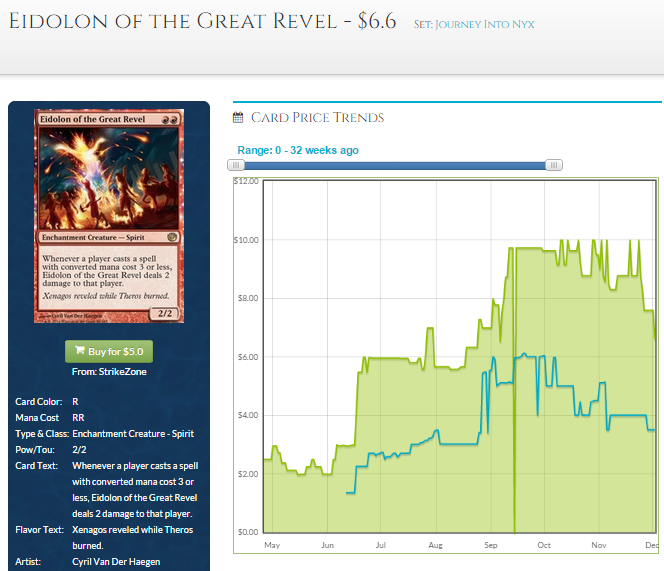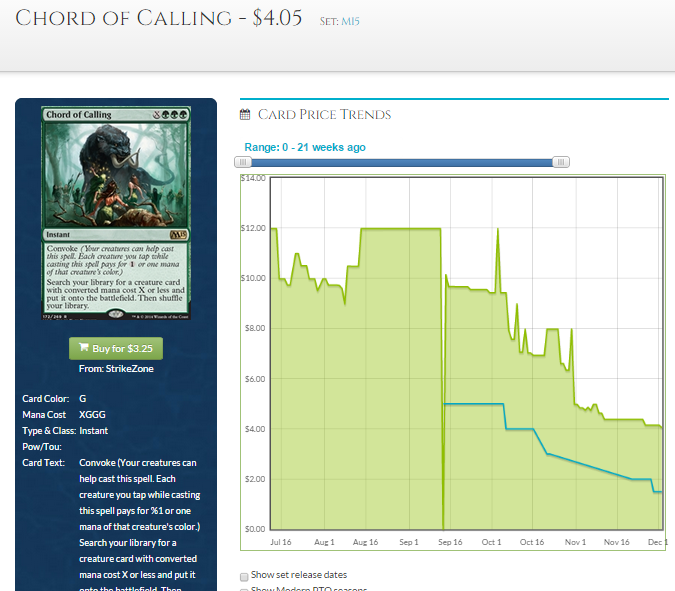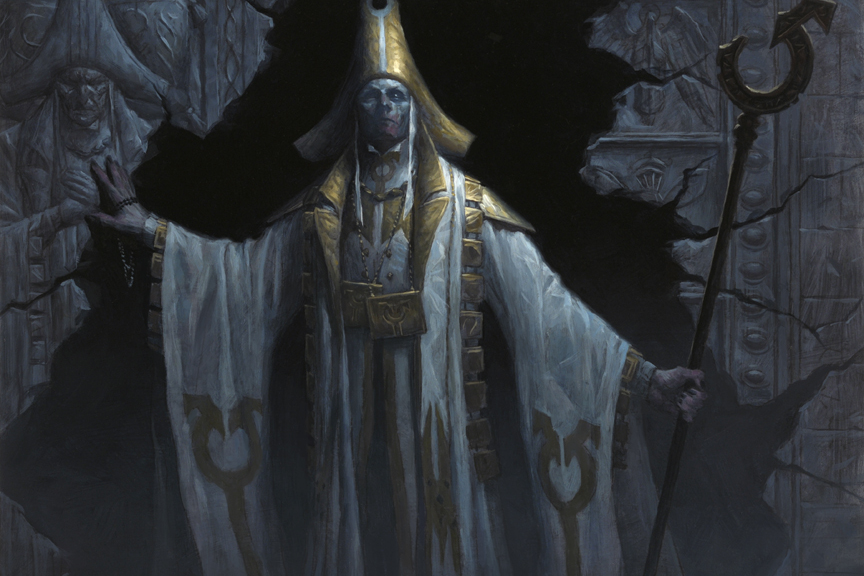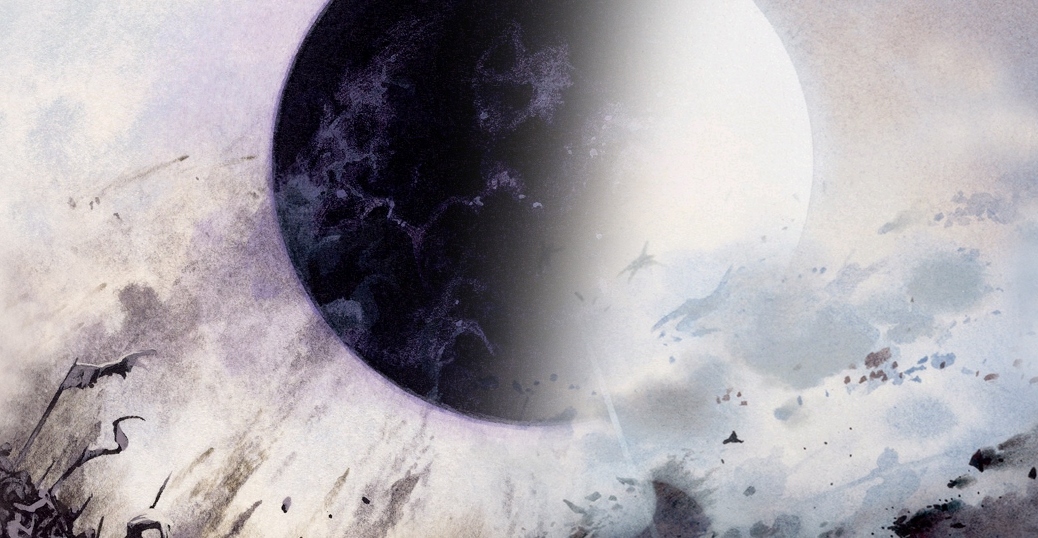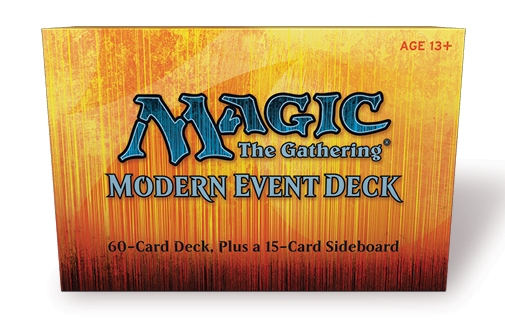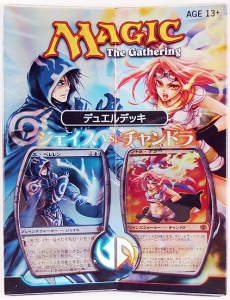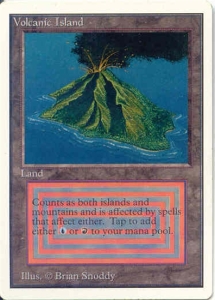Legacy Hero #5
With all of the commotion from the holiday it was rather difficult to put anything together that was worth reading last week so I took a mini vacation from writing. I hope everyone had a great holiday. I’m excited to get back into the swing of things. I have some great stuff for you guys this week.
First things first. I received some feedback about my comment regarding using my job to ship stuff for free. It is not okay to steal stamps from your work, especially to mail out magic cards. I am fortunate to work in a place where I get to take advantage of free postage due to the volume of mail we send out. I won’t do that for this series going forward. It isn’t a fair way to operate when I’m trying to show people how to do something. The actual cost of the stamps may seem trivial when compared to a deck that costs thousands of dollars but I need to operate this series on the same playing field as the majority of the community.
I feel the need to throw in my two cents regarding the changes with the way Star City is going to handle their opens in the coming year. I know I’m late to the show here but I want to say my peace. By now, everyone probably knows about the changes but just in case you’ve been living off the grid they are doing away with the current dual open format and condensing them into a single format event styled after the Grand Prixs with larger payouts, and the other formats will be represented on Sundays with $5000 Super IQs without the video coverage. When the changes start we will be reduced to three Legacy Opens, out of the nineteen opportunities. While we will have larger payouts, there won’t be an opportunity to watch Legacy on Sundays like we used to. Personally, I can’t tell you how many times I have the stream open and playing in the background while doing other things. I stumbled across this post on Facebook from Jared Sylva going into a little more detail about the situation.
I’m not a fan of the changes for selfish reasons but from their perspective it makes business sense to switch things over. I don’t believe that the changes will be the death of Legacy. The changes shouldn’t affect the Legacy prices that much, if at all. There is a lot of talk about the “Legacy Bubble” and this could be the end. I’m not immersed into the finance culture enough to make any sort of calls on the subject. My gut tells me that there is a bubble and it is slowly deflating and prices will settle a little lower than they are now. Volcanic Island looks to be overtaking Underground Sea as the premium dual land but that’s about it.
Next up, we have the Pucatrade updates. I want to stress how important it is to manage your wants list. I had a nice little stockpile of points going for a while. Unfortunately I had a small incident. I was sitting down after a piece of pumpkin pie, looking up prices of random foils when all of a sudden my point total went tumbling down. I lost over 800 points. Somehow I had added Ancestral Visions to my want list and someone decided to ship one my way. I don’t remember even adding it to my list. Lesson learned. I revised my wants list immediately. At this point, my hope is that it gets unbanned in Modern and blows up to $30 overnight. The only other Pucatrade news is shipping out my foil Kaervek, the Merciless for almost 900 points. I’m glad to be rid of that thing.
I know that everyone who has been following this series has been waiting for the trades. You guys want to see how I am going to start getting things together. It’s been pretty tough. One thing I’ve learned from this project so far, is how difficult it can be on the other side of the trade table. I haven’t had to actively look for trades in quite some time. I forgot how brutal it really is out there. When you’re the one looking for the cards, it’s a hard road without cash. The number of wannabe sharks is insane. In my regular store, people know how I operate and how I strive to be fair. The other stores I’ve been trying out don’t see things quite the same way. I feel for you guys. The struggle is real. That being said, I was able to sit down with someone and hash out a deal that should go a long way in deck construction.Finding the trade was a stroke of pure luck. I was at a random store that I’ve been to a couple times before, but it is certainly a long way out of my regular rotation. I had heard through the grapevine that the EDH crowd there was pretty hardcore. Having a hardcore playgroup to trade with can be a very good thing when you’re stuck with a bunch of random things in your binder. In my experience the hardcore EDH/Casual crowd have good quality trades available and usually have a diverse taste for cards. One thing I like to do before sitting down to grind some binders is take a look at the store’s inventory. Identifying what they’re out of stock on and what they’re actively buying helps identify the market you’re in. As an example, my local store’s market is very different than the store I go to to play EDH at. The store I play FNM at pays $5 more (in store credit) for Thoughtseize than the store I play EDH at. Having bits of information like that will go a long way in helping you maximize your card values.
Getting back to the trade, as I mentioned, it was pure luck. I was sitting down with some people I haven’t met before, talking about their meta game and trying to get someone to look through my trades when someone asked if I happened to have a foil Savageborn Hydra. As luck would have it, I did. I pulled out my stuff and told him take a look at what I had. Like any normal, sane person he was more than happy too. I told him to just pulling out things he was interested in. Having the other person go through all of your stuff and pull out everything they’re interested in puts you in the drivers seat. I learned this little trick a long time ago. It gives you the opportunity to pick through their cards to match the value they’ve already established. You get to pick and choose the cards that are going to net you the most value while maintaining their interest. If your trade partner is excited about getting a big stack of cards they are usually willing to lose a little value because of the attachment they already have to the cards. When I sold cars just after college I would always let the customer hold the keys after we got back from the test drive. That little token implies ownership. This situation is similar in that your trading partner has already found all of the things they could possibly want from you and you are going to find whatever you can to make the numbers work. You are going to go out of your way to make sure they get to walk away with everything they wanted. The downside that this process can be a huge waste of time if your perspective trade partner just doesn’t have anything. 90% of the time people will be upfront with you and tell you that they don’t have much to trade and they don’t want to waste your time. When those situations come up I will usually tell them to take a look at my cards while I flip through what they have and then see what they have, see if i’m wasting time or not.
He spend 20 mins or so digging through my stuff and ended up with this nice little pile.
The picture isn’t the best so here is the list;
Ichorid
Teferi, Mage of Zhalfir x2 (Time Spiral)
Electrolyze x4 (Modern Masters)
Elspeth, Sun’s Champion
Grim Lavamancer (M12)
Aether Vial (Modern Masters)
Thoughtseize (Theros)
Temple of Abandon x4
Temple of Silence x4
Temple of Triumph x4
Temple of Deceit x4
Vesuva
Knight of the Reliquary (Modern Masters)
Academy Ruins x2 (Modern Masters)
Cabal Coffers (Torment)
Foil Savageborn Hydra
At this point I hadn’t even looked through his stuff. He had a pretty decent sized binder and a smaller monster binder. A good sign to me. The more expensive cards usually reside in the smaller binder. I thumbed through the stack of card he has set aside and did a little math in my head and estimated about $200 in value. I’m not Rain Man, I just make sure to double check the prices of my cards before heading out for the day. I don’t like to be the guy that pulls out his phone to look up prices. I want my trade partner to be the one to pull out the phone and start looking up prices. The standard pricing tool I run into most of the time seems to be tcgplayer.com mid but there really isn’t an industry standard.
I take my time and go through everything in his binders a couple times before pulling anything out. He has a lot of good stuff that I need for the deck. Force of Will, Tundra, Swords to Plowshares, etc.The first couple cards I pull out of his binder are a pair of Unglued Mountains. I love those damn things. I’m a total sucker for Unglued and Unhinged lands. I know I want to make a play for some bigger cards here. I decide to try and shoot for the Tundra and settle for Force of Will. I also decide to snag the 5 Chalice of the Void he has. It’s been around $6 for a while (at the time I made the trade last week) and I really liked the card for a speculation target. Chalice of the Void has been talked about for a while as an answer to the new Delver deck.
Here is the list I put together from his binder
Brainstorm x4 (Mercadian Masques)
Swords to Plowshares x4 (Duel Decks)
Mountain x2 (Unglued)
Ancient Tomb (Tempest)
Sensei’s Divining Top (Champions)
Chalice of the Void x4 (Mirrodin)
Chalice of the Void (Modern Masters)
Tundra MP (Revised)
Force of Will LP x2 (Alliances)
Show and Tell (Judge Promo)
Karakas (Judge Promo)
I could probably write an entire article about the psychology involved with trading but that will have to wait for another day. Basically I made sure to grab more value from his binder then mine and the judge foils. Based on my read of him (using what he was telling me about how he built his decks) he liked his foils and he loved his promos. Presenting him with the chance of keeping his promos and still getting all the stuff he wants from me is another subtle advantage for me. The toughest part of this trade was establishing a value for the played cards. The Force of Wills and Tundra were less than mint. I’m not a professional card grader. I always err on the side of caution when grading/pricing my cards and do the same with my trading partner’s cards. He went to eBay closed auctions and used that to try and price the played cards but wasn’t going to budge from his $200 price on the Tundra. However, he put $65 on the Force of Wills. That number worked well for me! I walked away with this
Brainstorm x4 (Mercadian Masques)
Swords to Plowshares x4 (Duel Decks)
Mountain x2 (Unglued)
Ancient Tomb (Tempest)
Sensei’s Divining Top (Champions)
Chalice of the Void x4 (Mirrodin)
Chalice of the Void (Modern Masters)
Force of Will LP x2 (Alliances)
The cards he got from me totaled up to $221 and the cards I got from him totaled $215. Why would I give away $5 of value? Let’s take a look at the numbers breakdown.
Cards I’m trading away;
Ichorid $13
Teferi, Mage of Zhalfir x2 (Time Spiral) $13 ($26)
Electrolyze x4 (Modern Masters) $2 ($8)
Elspeth, Sun’s Champion $20
Grim Lavamancer (M12) $4
Aether Vial (Modern Masters) $22
Thoughtseize (Theros) $22
Temple of Abandon x4 $2.50 ($10)
Temple of Silence x4 $4 ($16)
Temple of Triumph x4 $5 ($20)
Temple of Deceit x4 $3 ($12)
Vesuva $12
Knight of the Reliquary (Modern Masters) $5
Academy Ruins x2 (Modern Masters) $6.50 ($13)
Cabal Coffers LP (Torment) $10
Foil Savageborn Hydra $8
Total: $221
And my end of the trade;
Brainstorm x4 (Mercadian Masques) $1 ($4)
Swords to Plowshares x4 (Duel Decks) $3 ($12)
Mountain MP x2 (Unglued) $2 ($4)
Ancient Tomb (Tempest) $15
Sensei’s Divining Top (Champions) $20
Chalice of the Void x4 (Mirrodin) $6 ($24)
Chalice of the Void (Modern Masters) $6
Force of Will LP x2 (Alliances) $65 ($130)
Total: $215
The condition of the Force of Wills aren’t as bad as he thought. Light Play Force of Will for $65 each? Yeah. That’s a win in my book. Trading out a ton of standard cards for solid legacy staples? Also a win in my book. Getting Chalice of the Void for $6 when (as of 12/1) they are now buy-listing for that price? Another victory.
The six Chalice of the Voids that I scored are going to go a long way in helping me refill my trade binder after this. That’s all for this week though. I will have plenty more next week.
As always I appreciate feedback.
Follow me on twitter @somethingsays and you can email me at mtglegacyhero@gmail.com
ADVERTISEMENT: MTG cards storages are simply boring these days, why settle for the usual holiday gift box or the fat pack box? Get the Grimoire Deck Box and store your prized collection with the best best in class storage
